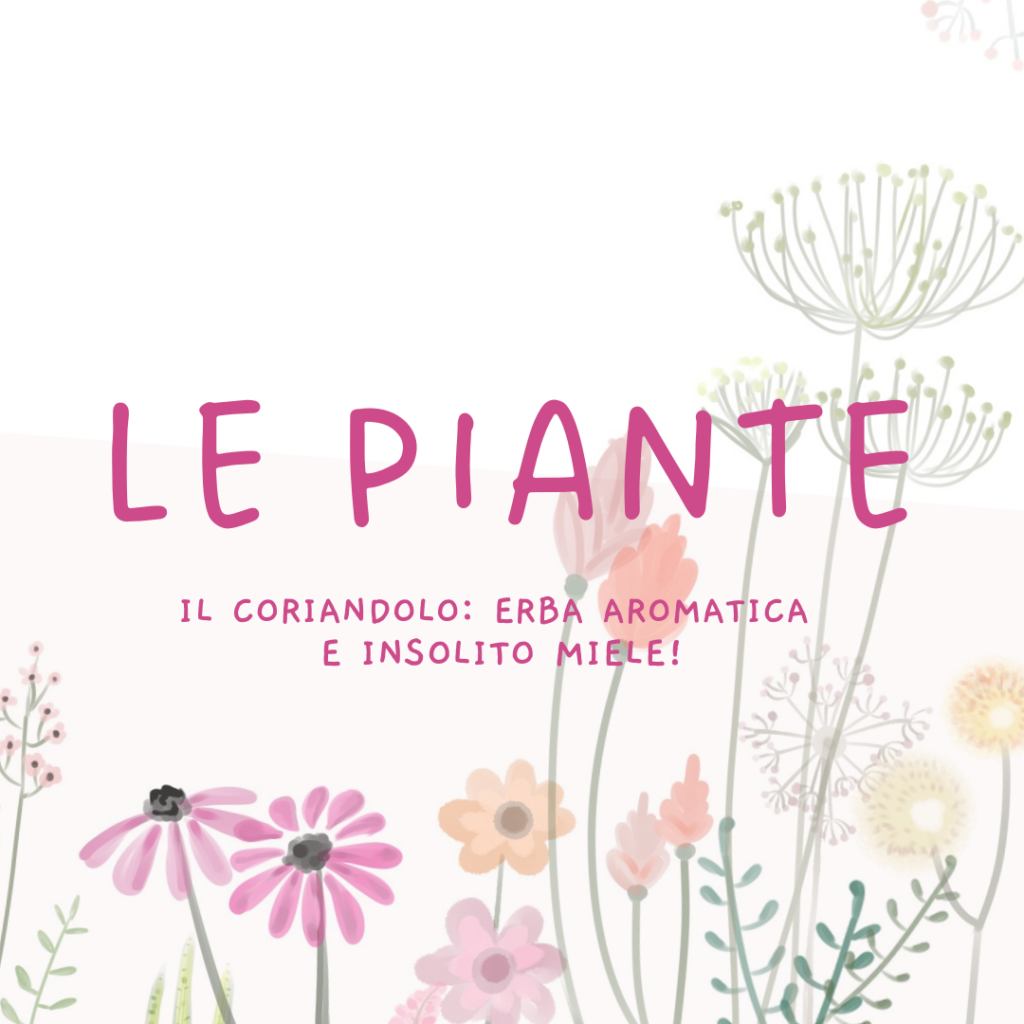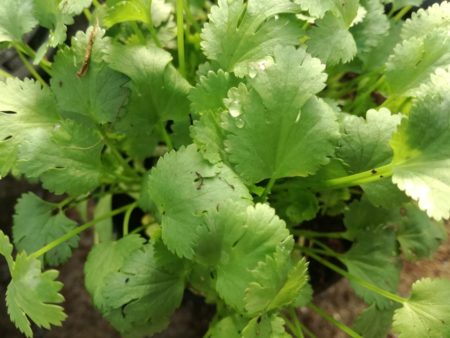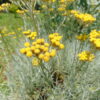
Coriander: aromatic herb and unusual honey!
Easily mistaken for parsley until the peeled leaves release their soapy aroma, the coriander it is an herb of ancient tradition. Today, phytotherapy recognizes coriander as having important aperitif and digestive properties, effective in combating loss of appetite and intestinal swelling.

Coriander: how to care for it and where to plant it
It is a herbaceous plant with an annual life cycle, capable of reaching i 60cm high. On the farm we sow coriander towards the end of January and we have the first plants ready for sale around mid-March. The vegetation cycle of coriander is very rapid. The tendency of the plant is in fact to quickly increase vegetation at the base, and then elongate, developing erect stems.
Any advice for managing it better? Cut it often! By doing so you will keep the vegetation thick and prevent the plant from becoming bare at the base as it grows in height. In addition to trimming the vegetation often, when you buy your coriander plant, remember to dedicate a slightly larger pot to it or a pot shared with some other aromatic herb or even in the garden or vegetable patch. By giving your seedling more space, you will allow it to develop better and produce more vigorous vegetation until late summer. Once the summer period has reached the end, which will coincide with the fading of the inflorescences, the plant will tend to slow down its vegetation and shut down with the first cold weather. As we were saying, in fact, the life cycle of coriander is annual, that is, within a one-year life cycle, the plant is born, develops, reaches flowering and concludes its vital process with exhaustion.
Coriander loves sunny exposures and drained soil. It requires regular watering, but we recommend avoiding water stagnation!
Do you want to plant your coriander in a pot and don't know which other herbs to pair it with? We recommend chives, thyme and sorrel!
Coriander: a must of exotic cuisine and of the past
The fresh leaves of coriander are an essential ingredient of various dishes southeast asian and often also accompany many traditional dishes Mexicans. The seeds are used whole or ground to impart a delicate note to dishes Indians of curry and many sweet and savory recipes. The roots peeled and incorporated into a spread or cut into pieces and fried they taste much more similar to the seed than the leaf!
Coriander leaves are used to flavor falafel, delicious fried meatballs made from legumes, and flavor the traditional Moroccan couscous.
The Romans used this spice a lot, crushed and mixed with salt and vinegar to preserve food and think that Apicius made it the basis of a condiment called "Coriandratum".
From the sugar-coated seeds they get their name Carnival confetti, later chalk pellets, now multicolored paper disks and even in the sixteenth century the English produced real sweets with coriander seeds covered in numerous layers of sugar!
Coriander: an unusual honey with precious properties
The honey of coriander is obtained from the flowering of the plant itself and is characterized by its amber color and his light sweetness and never too intrusive. Coriander plants produce a lot of nectar and are an excellent source of sustenance for our bee friends.
Rich in antioxidants, useful for favor the digestion and how immune system stimulant. Great to use in the kitchen in savory and sweet dishes, this honey is ideal to consume in accompaniment to cheesesor, in addition to fruit and herbal teas. Also try it as a natural sweetener for your desserts!
Are you curious to try it? Find out the coriander honey directly in our catalogue!
Doubts and want some more clarification? Write to us!














